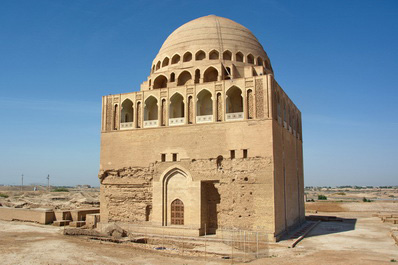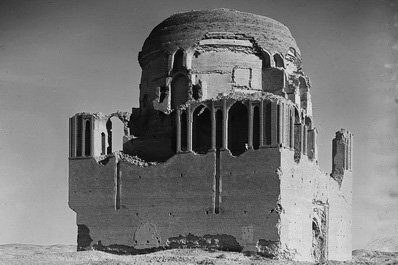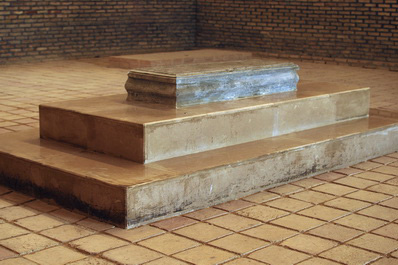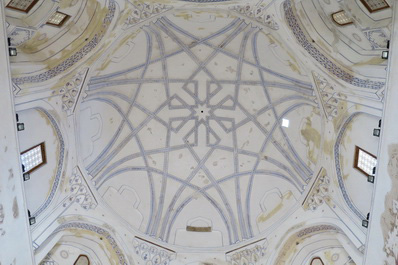Sultan Sanjar Mausoleum, Merv
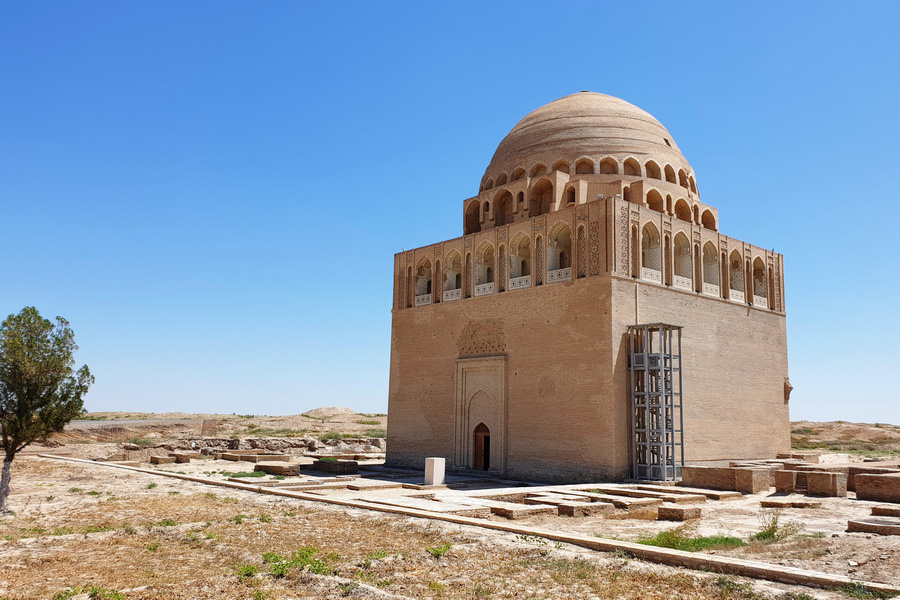
The Mausoleum of Sultan Sanjar is the most majestic and awe-inspiring monument in Merv. Built in 1157 over the tomb of the last ruler of the Seljuk Empire, it was constructed at the height of Merv's power. The massive structure, with its towering walls, was awe-inspiring in its day and still impresses travellers today.
Sultan Sanjar, whose full name was Muizz ad-Dunya wa ad-Din Adud ad-Dawlah Abul-Harith Ahmad Sanjar ibn Malik-Shah, was one of the greatest rulers of the Seljuk Empire, reigning for nearly 40 years - longer than any other ruler of his time. His reign marked a period of prosperity, and under his leadership Merv's population swelled to half a million, making it the most populous city in the world. Towards the end of his life, however, Sultan Sanjar suffered defeat at the hands of the Qara Khitai Khanate and was later captured by the Oghuz tribes, escaping only a year before his death. With the fall of Sultan Sanjar, the Seljuk Empire began to crumble and neighbouring states seized the opportunity to divide it. The mausoleum therefore serves not only as a tribute to Sultan Sanjar, but also as a symbol of the decline of his once mighty empire.
In 1221, the Mongol army led by Tolui Khan, the youngest son of Genghis Khan, laid siege to Merv. After seven days, the city surrendered and its inhabitants were massacred. The city's buildings and walls, including the mausoleum of Sultan Sanjar, were destroyed. The outer patterned brickwork was ruined and the dome collapsed. The Mongols attempted to loot the tomb, but when they lifted the slab, they found that the townspeople had secretly reburied Sanjar's remains. Sadly, the location of his new tomb has been lost to history.
Over the centuries, the mausoleum fell into disrepair, and when European explorers discovered it in the late 19th century, the monument was in poor condition. Two restoration attempts in the 20th century were unsuccessful and altered the original structure. In 1999, however, the Mausoleum of Sultan Sanjar was inscribed on the UNESCO World Heritage List, along with Merv. A major restoration project took place between 2002 and 2004. The mausoleum has been given back its original appearance.
The mausoleum is a cube-shaped structure with sides measuring 27 metres, topped by a dome 17 metres in diameter, bringing the total height to 38 metres. The walls at the base are 5 metres thick. During its construction, the mausoleum was part of a larger complex that included a mosque and a palace, as evidenced by excavations that have revealed numerous foundations around it.
The original dome was covered inside and out with blue glazed tiles, giving the appearance of a blue sky. There were small towers at the four corners of the dome, which no longer exist. The outer walls were decorated with intricate brickwork patterns. Although little remains of the original interior, it is known that the tomb of Sultan Sanjar was located in the centre of the hall. Today, the tomb is still in place, but empty.
The design of Sultan Sanjar mausoleum influenced many later architectural projects. Its monumental scale, precise geometry and integration with a mosque can be seen in medieval Islamic structures such as the Soltaniyeh Dome and Jami Mosque in Iran, and the Sultan Hasan Mosque in Cairo. The mausoleum itself bears some resemblance to the Samanid mausoleum in Bukhara, but it is considerably larger.
A visit to Turkmenistan would not be complete without including the Sultan Sanjar Mausoleum in your tour itinerary. Its grandeur will leave a lasting impression, with its striking exterior and cool, resonant acoustics inside.

